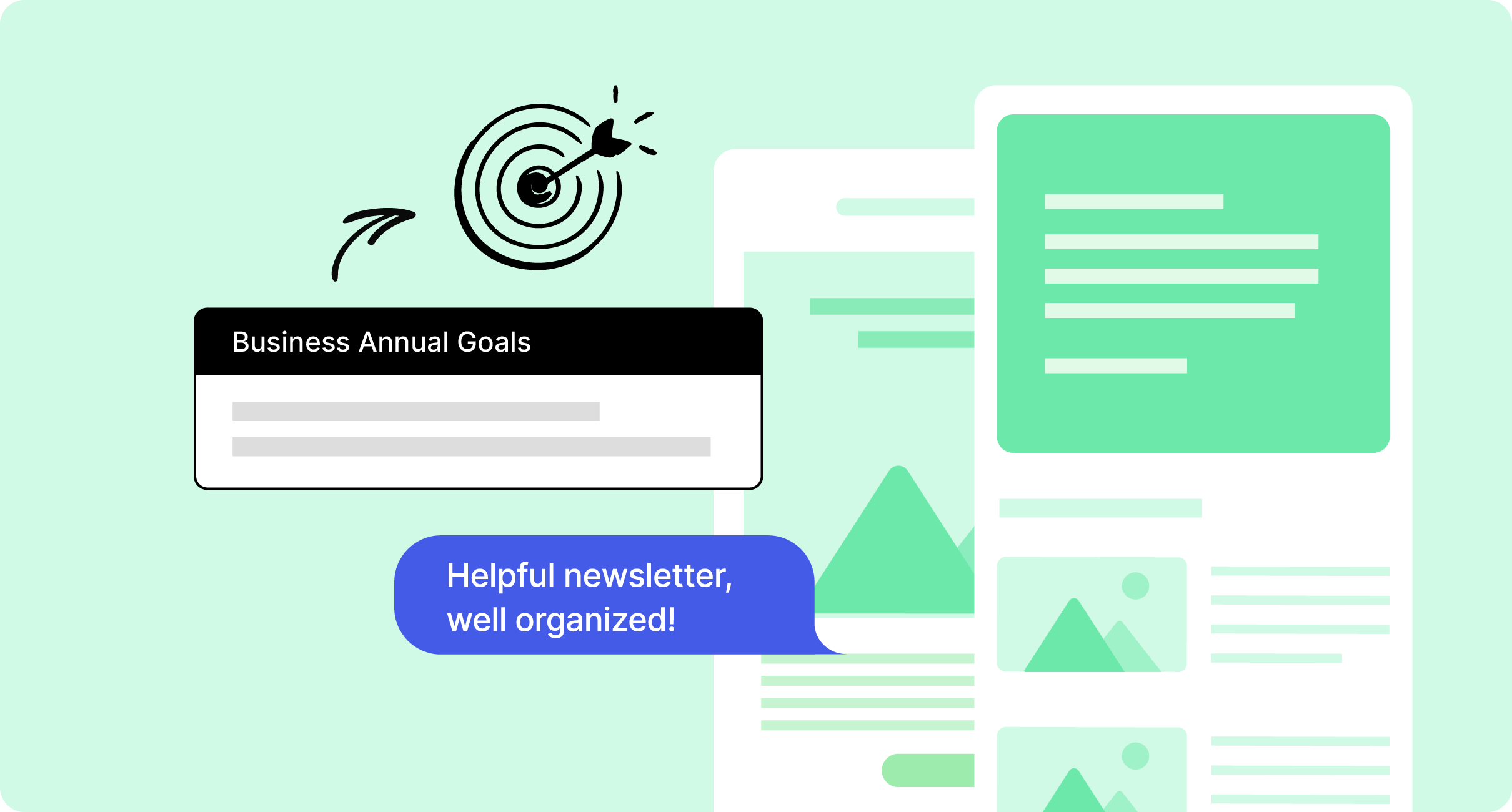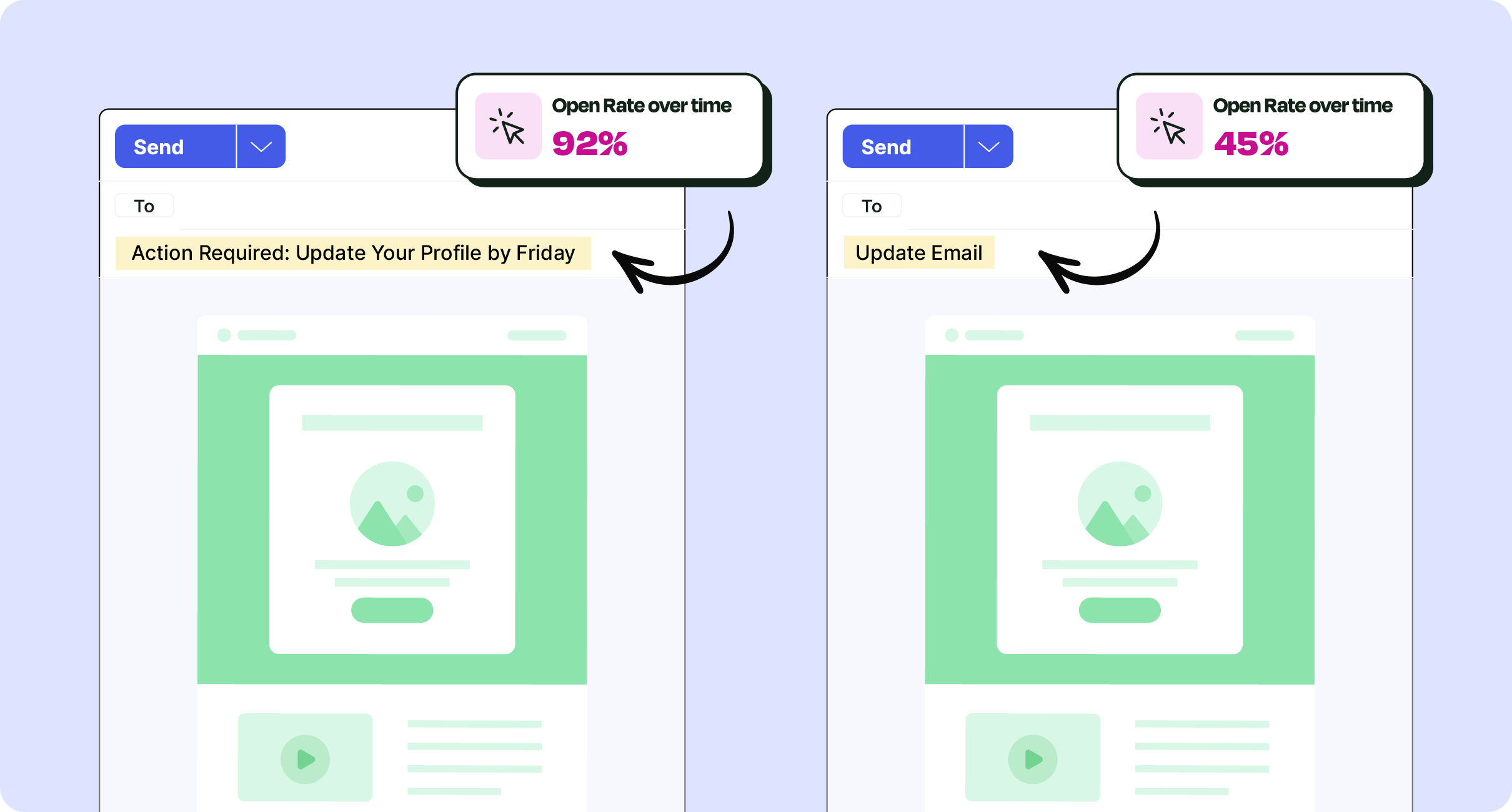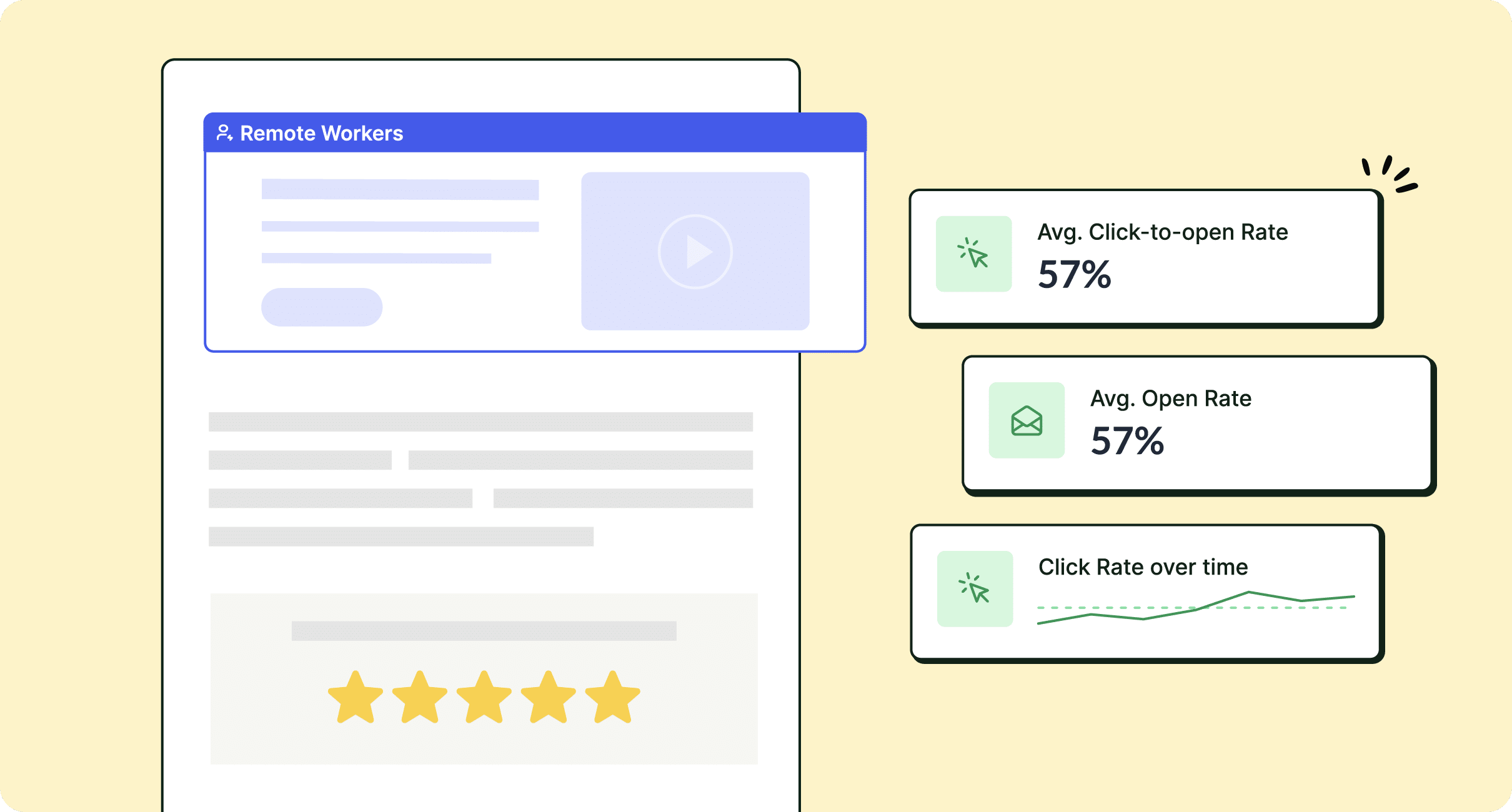Are your internal emails struggling to get the attention they deserve? Increase your email engagement by learning the best time to send internal emails for your business.
Despite all your efforts, your best employee emails can fall flat if your employees don’t get around to reading them. Your employees are inundated with emails, but you can increase the likelihood that your internal emails get read by sending them at strategic times.
Sending emails at a regular, consistent time also encourages your employees to make reading your internal emails a habit, just like checking their social media.
We’ll explore how to find the best time to send your business emails and how you can schedule them ahead of time to ensure you never miss a deadline. Ready to see how a modern internal email platform can transform the way you create and send internal emails?
Take a self-guided tour of ContactMonkey
See how our key features can streamline your internal communications.
Take product tour

Determining the Best Day and Time to Send Internal Emails
Not all employees read their emails the same way. A person working as a nurse will read their work emails in a very different manner than an accountant. Understanding how your employees engage with your internal emails is crucial to determining the best time to send – one of the most important internal email best practices to master.
One way you can find the best time to send employee emails is simply ask your employees! Prepare an employee survey to get input from your employees as to when they’d prefer to receive internal emails. Do your best to accommodate your employees’ different preferences; try sending multiple surveys and narrowing down the options based on the feedback you’ve received. Learn about the different ways to use surveys in employee emails.
You can also use ContactMonkey’s Internal Email Benchmark Report to see when other businesses in your industry send their internal emails.
Best day to send internal emails
You may think that Monday—the first day of the work week—is the best day to send an internal email to your employees. After all, they just had two days to recharge and prepare themselves for the week ahead.
But according to our internal communications benchmark report, Monday is ideal for about only 50% of companies. The other 50% opt for midweek send days. There are numerous factors that contribute to this division, but the bottom line is clear: different workforces engage with emails differently.
Using information from our internal benchmark report can give you an idea of when other companies in your industry send their employee emails. You can also look at your own email tracking data to find when your employees are engaging with your emails.
We’ll get more into email tracking and analyzing metrics for finding better send days and time below.
Best time to send internal emails
Just like the best days to send internal emails, the best sending times will differ based on the nature of your business, employees’ habits, work culture, and myriad other factors. Whether you’re sending an multilingual employee newsletter, higher education communications, or leadership communications, it’s important to keep your sending time consistent.
Your employees are creatures of habit, and regular email times can help them make reading your messages a part of their routine. Ideally, your employees will check their work emails with the same consistency and fervour with which they check their personal emails and social media.
Get powerful send features with ContactMonkey
Create custom audiences, increase content relevancy, and improve employee email engagement.
Learn more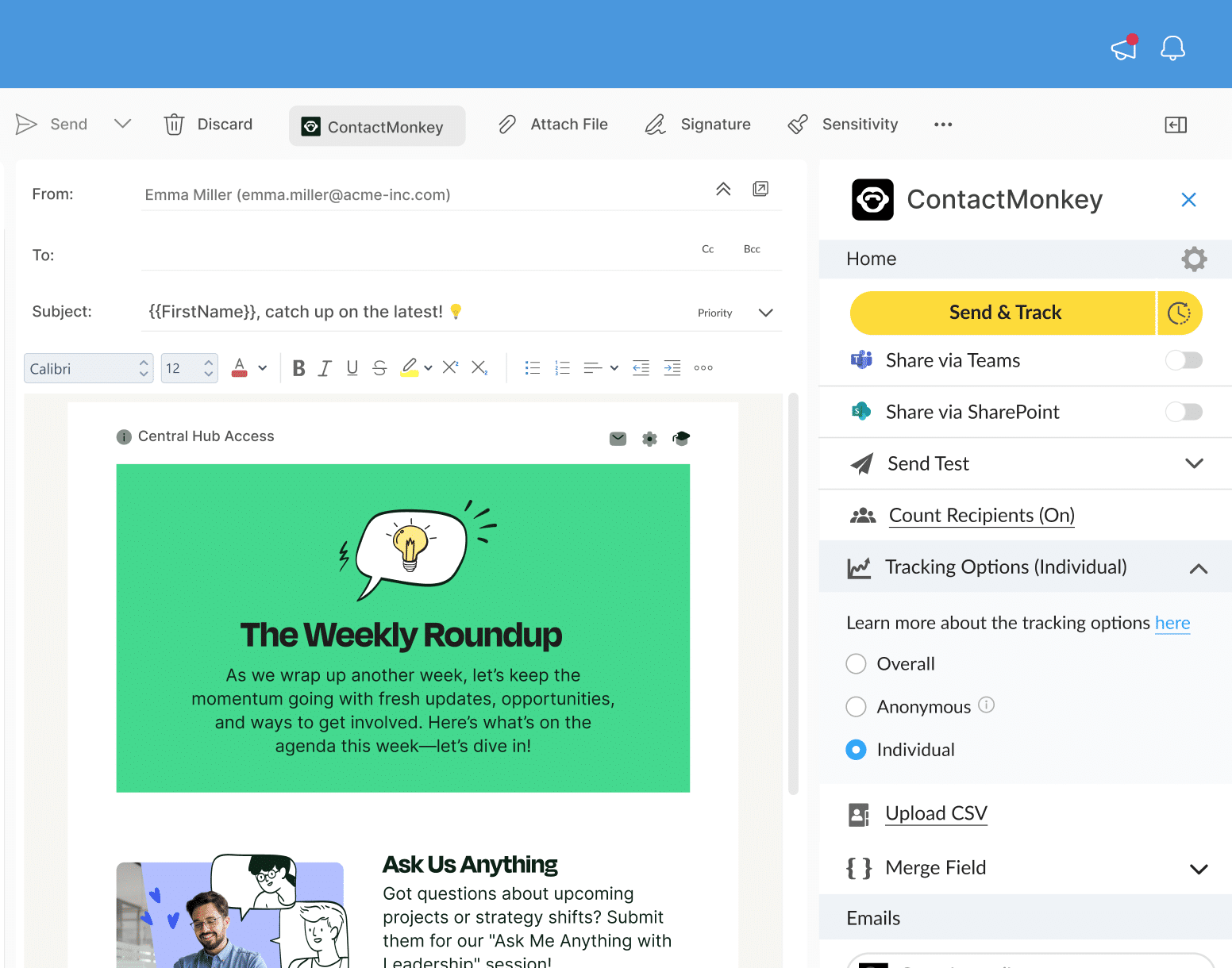
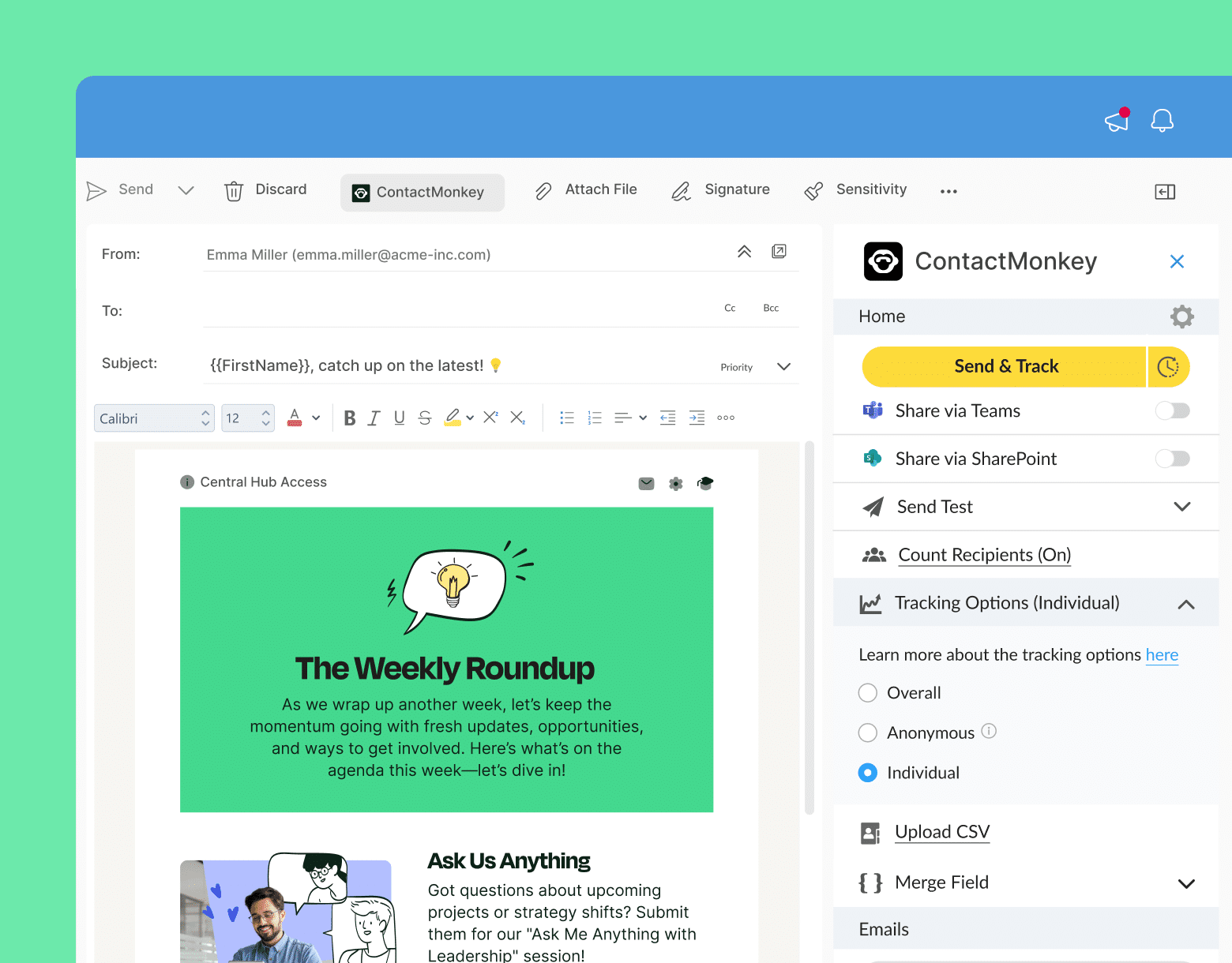
Why Does Send Time Matter?
With every internal email you send, your aim should be maximizing your email open rate. One of the best ways to do this is to understand when your employees are most likely to engage with emails. This is such an important factor that will determine the performance of your internal email strategy.
Compare the send time of your email campaigns to their engagement metrics. Are there certain times when your emails get more engagement than others? Try experimenting with different send times to find the sweet spot where your employees are most likely to give their attention to your internal emails.
How To Send Internal Emails
Now that you have an idea of how to determine the best times and days to send your internal emails, you can begin planning, creating, and sending those internal emails in bulk.
It’s helpful to map out when you’ll be sending future employee emails. Using an internal communications planning calendar you can create internal emails ahead of time so you’re not scrambling at the last minute to send it at your designated time.
When your next email send is approaching, an email management tool like ContactMonkey’s email template builder can help you save huge amounts of time when creating your internal emails.
Using ContactMonkey, Mettler Toledo saved 25 days a year on building their internal communications.
After you’ve created your email, you can easily import it into Outlook using the ContactMonkey sidebar. You can also select which distribution list you’d like to send it to, and whether you’d like to personalize your body copy or subject line using merge tags.
Personalizing your subject lines has been shown to increase open rates by as much as 50%. After all, no one likes receiving an email that’s obviously been sent to 1000s of other recipients as well. An engaging employee newsletter name can also entice potential readers to click on your email.
You can further increase email engagement by targeting employees with only relevant email content by using email lists. Create custom email lists using ContactMonkey’s employee email list management feature so you can avoid inundating your employees with emails meant for others.
Read more on why internal email lists are important, efficient, and effective.
ContactMonkey integrates with your existing Human Resource Information System (HRIS) like Workday and ADP, as well as Azure Active Directory, so your custom email lists will automatically update as employees join and leave your organization.
Modern internal comms and measurement tools
No design or technical expertise needed. Save time, increase engagement, and dazzle your employees with fun and interactive communications.
Explore all features

How to Schedule Internal Emails
You can ensure that your internal emails are sent at your optimal sending times without having to send them manually. Using ContactMonkey’s scheduled sending feature, you can automate your Outlook or Gmail inbox to send out emails at a set future date.
Simply select when you want your email to send using the Send Later option:
Need to change your scheduled send time? Simply navigate to your drafts folder within Outlook or Gmail and select the scheduled email. In Outlook, you’ll have the option to cancel the scheduled send using the ContactMonkey sidebar. In Gmail, simply delete the email and re-import it afterwards to set up a new send time.
Tracking Your Internal Emails
How can you tell if your select send day and time are increasing internal email engagement? Open rate, click-through rate, opens by device location, and read time can give you a detailed picture of how your employees interacted with your email.
Within ContactMonkey’s email analytics dashboard, all of your email metrics are visualized in an easy to track format:
Use the compare campaign metrics and analytics feature to analyze up to 10 of your sent emails to see which performed the best. Note what worked and what didn’t with your sent emails to find the winning formula for more opens and more engagement. Learn the top reasons that internal email analytics is so critical to driving success for internal comms.
Does your company have external or internal regulations around email privacy? Use ContactMonkey’s anonymous email tracking features to gather email metrics while maintaining your employees’ privacy.
Read our blog on the future of email and discover more innovative trends to amp up your internal emails. Also, check out our internal email checklist and ensure you have all the top employee email communication tactics in place.


Send The Right Emails At The Right Times
There is no secret technique for increasing internal email engagement at your business. Instead, keep in mind these important aspects of sending your internal emails:
- Pay attention to what works and what doesn’t on a trial and error basis.
- Collect feedback from your employees about their email receiving preferences.
- Track your email performance to determine the best combination of email design, content, and send times.
ContactMonkey’s internal communications platform lets you do all of this and more, helping your business adopt a data-driven approach to employee emails and engagement.
Learn how to use an internal communications software to improve internal and employee engagement at your organization. Book a free demo to see all the ways ContactMonkey can improve your internal communications:

